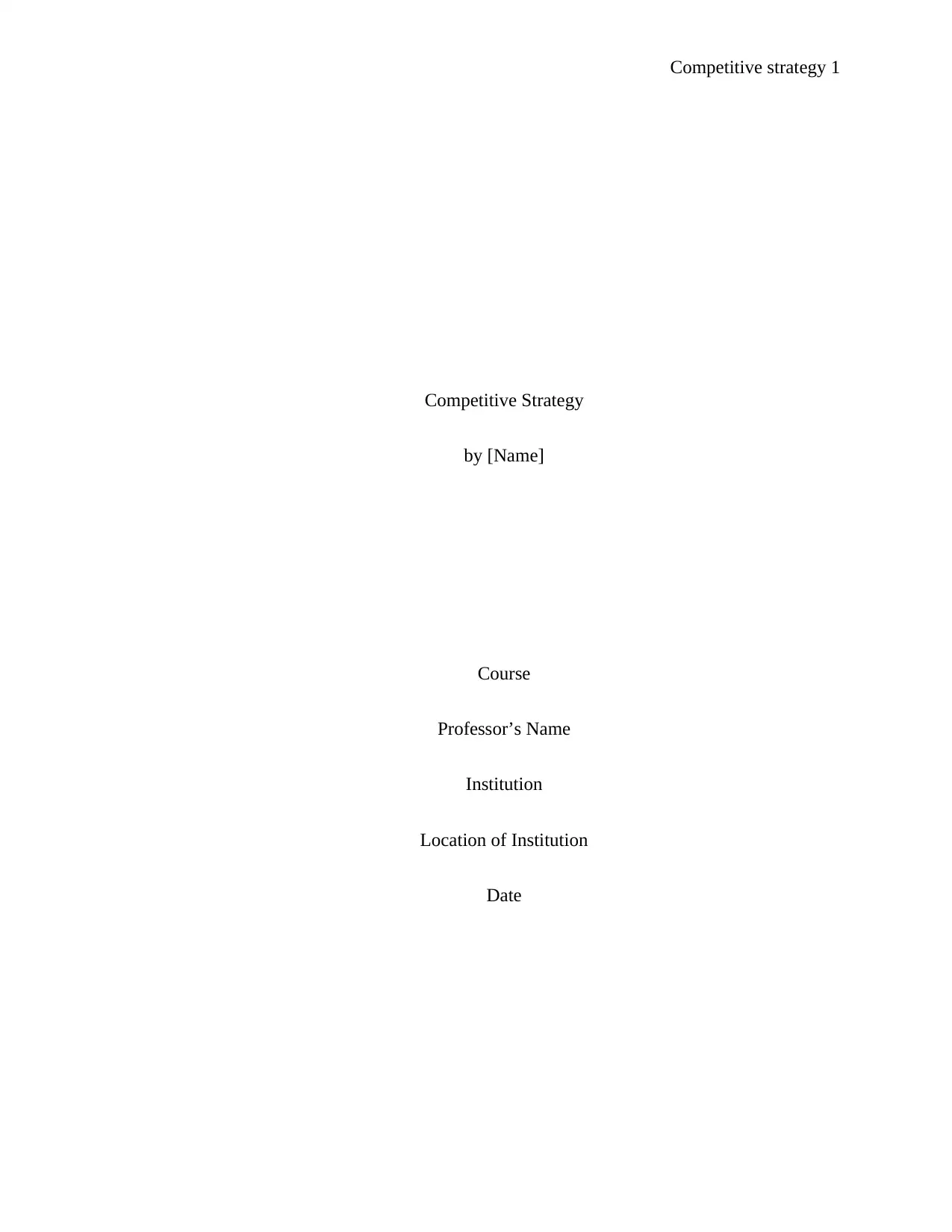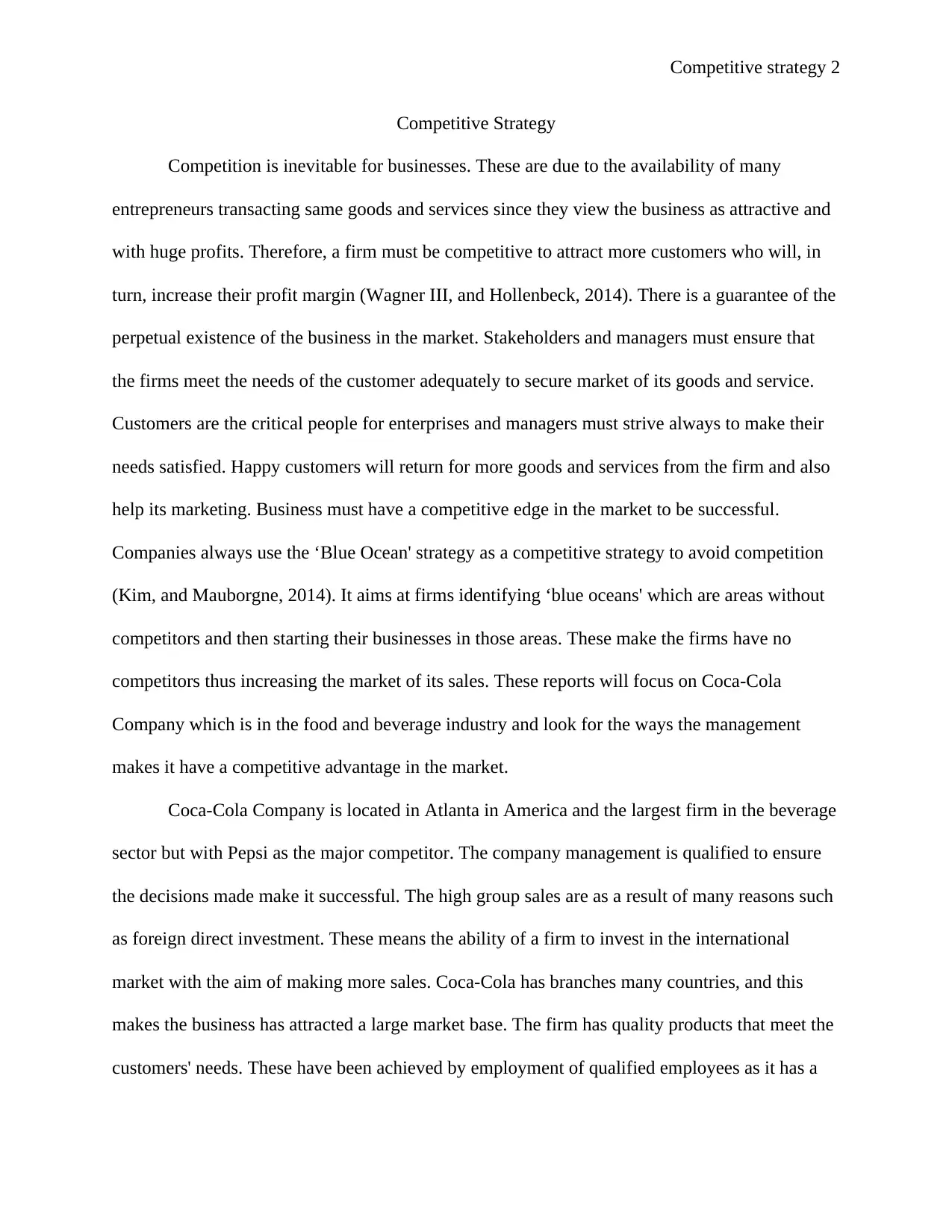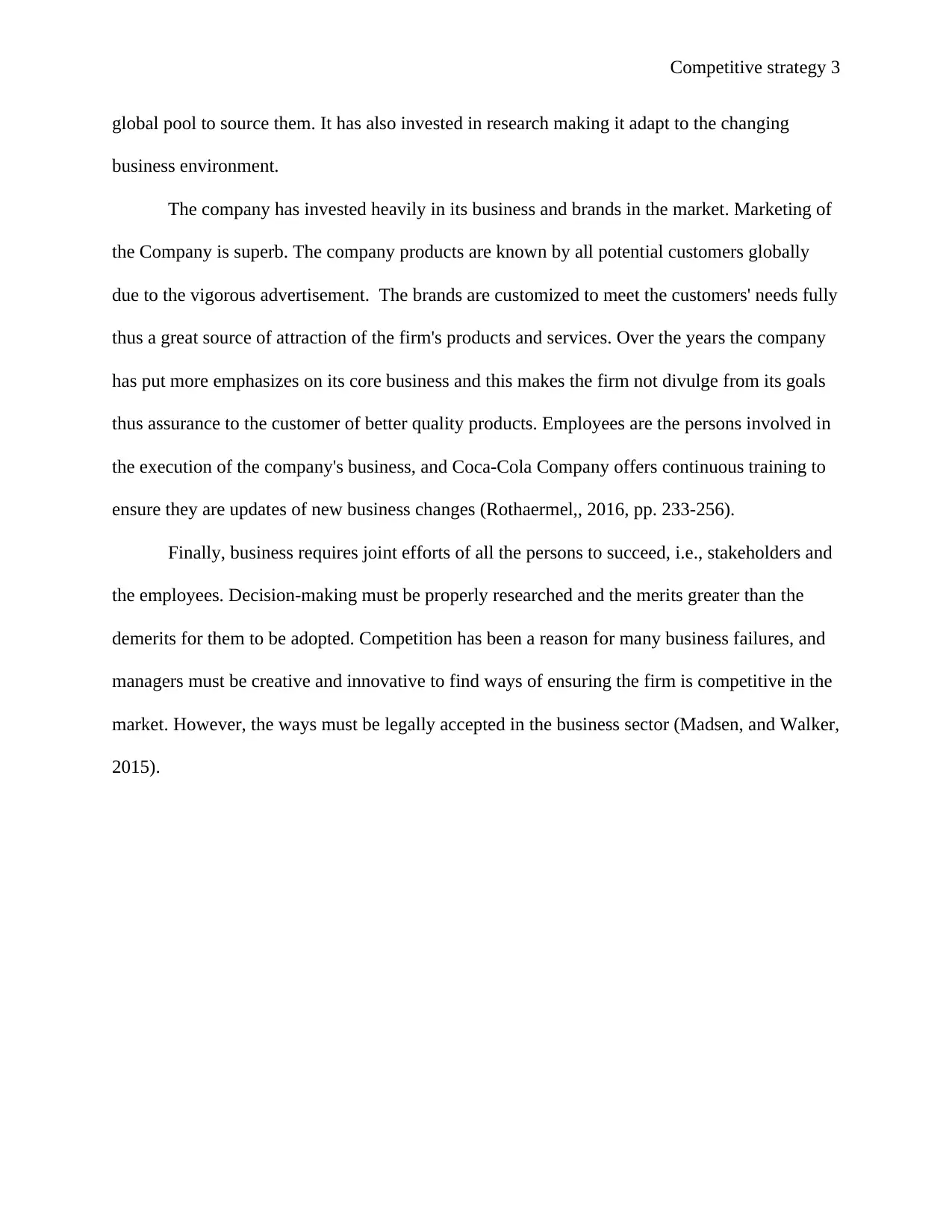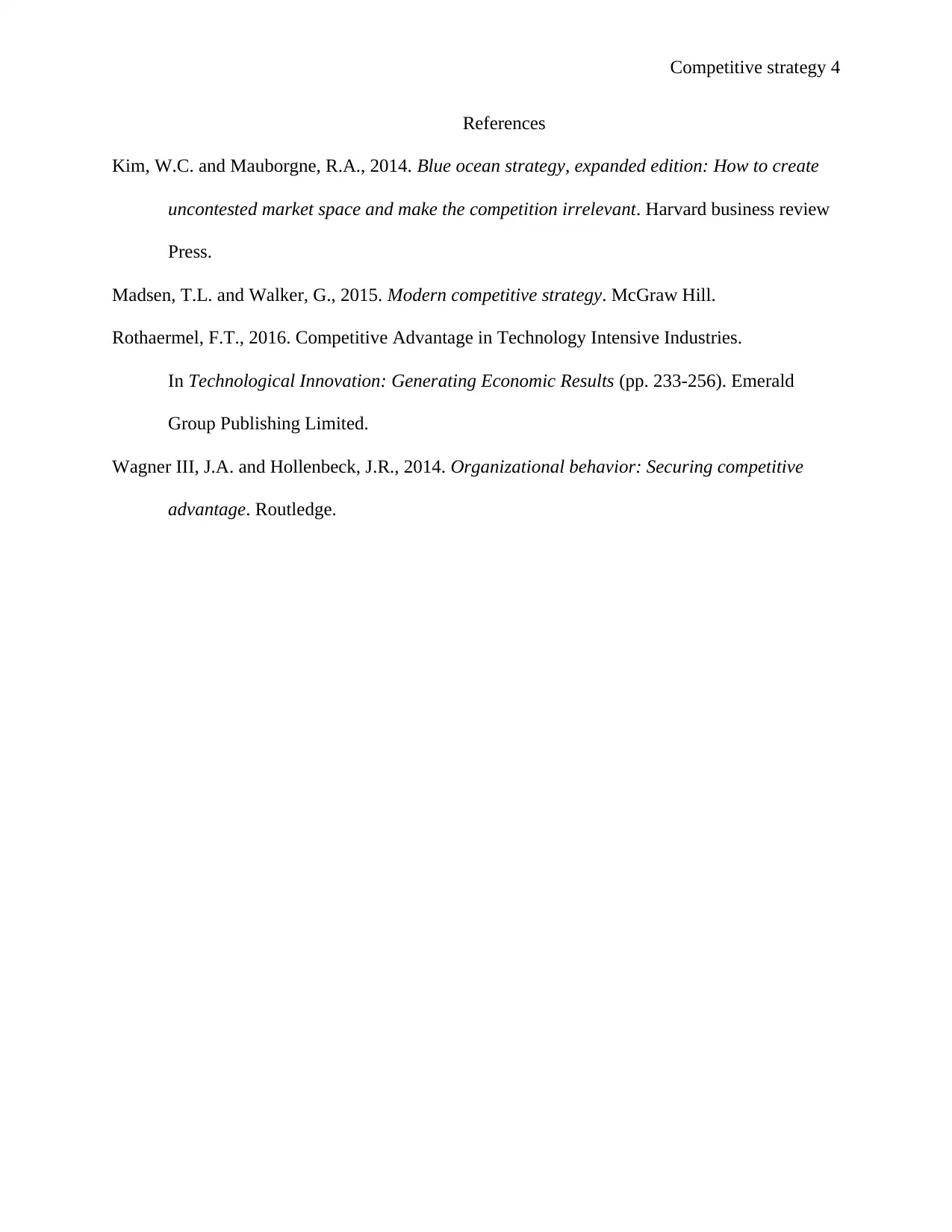Competitive Advantage: A Strategic Analysis of Coca-Cola Company
VerifiedAdded on 2020/04/07
|4
|736
|81
Report
AI Summary
This report provides an analysis of Coca-Cola's competitive strategy within the food and beverage industry. It examines how Coca-Cola maintains its competitive advantage in the market, particularly against its main competitor, Pepsi. The report discusses the importance of attracting customers, and meeting their needs. Key strategies include the 'Blue Ocean' strategy, foreign direct investment, product quality, employee training, brand marketing, and a focus on core business operations. The report highlights Coca-Cola's global presence, effective marketing, and continuous employee training as critical factors in its success. The report also emphasizes the importance of legal and ethical competitive practices and collaborative decision-making within the company.
1 out of 4











![[object Object]](/_next/static/media/star-bottom.7253800d.svg)